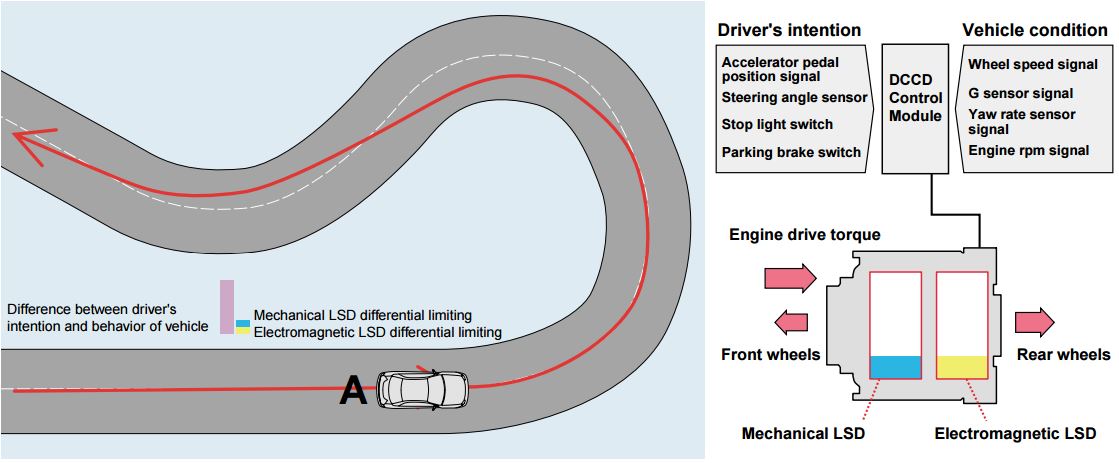LSD Mechanical DCCD Advantage Explained:
Controls giving priority to driver’s intention:
DCCD CM can know the driver’s intention* to turn from steering angle sensor signal. By reflecting this information to the electromagnetic clutch LSD control, excessive understeer or oversteer during turning can be avoided, allowing cornering as imaged by the driver. (*The driver’s intention can be determined through comparison among steering angle, lateral G and yaw rate sensor signals.)

intention, making passive control.

by continuously monitoring whether the driver has an
intention to further turn or the vehicle is excessively
turned.
Comprehensive LSD differential limiting force and vehicle operational stability during turning:
Consider relationships between the steering operation by the driver and the LSD differential limiting force and the resulting running characteristics of the vehicle.
A: Turning the steering wheel at an entry of a corner: Because the yaw rate is lower compared to the steering angle, DCCD CM reduces the electromagnetic clutch LSD differential limiting force, assuming that the driver has an intention to turn. It enables easier differential limiting by the center differential, allowing the driver to easily turn the vehicle.

differential limiting by the center differential, allowing the driver to easily turn the vehicle.
